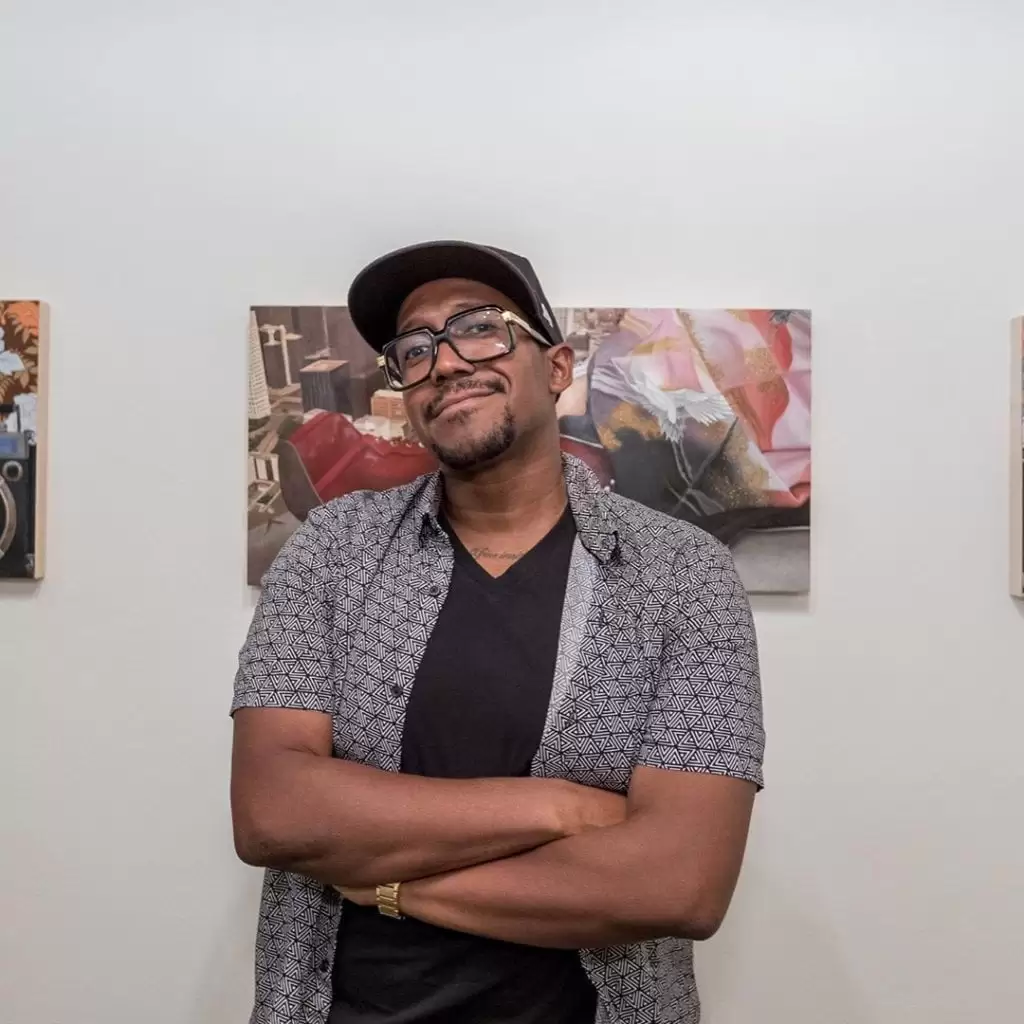In the latest installment of our Artists Inside the Industry series, we turn our discerning eye to the captivating works of Ken Flewellyn, a remarkable artist hailing from California. Flewellyn harmoniously melds the rhythmic vitality of hip-hop with the elegant subtleties of Japanese culture, a fusion deeply rooted in the influences of his youth.
I can see things come into to focus one item at a time. Once it’s all pretty clear, I can run back over every element and unify them with tight detail.
Ken Flewellyn
Flewellyn’s practice reflects his love for music and its cultural resonance, vividly exemplified in works like ‘Stay Gold.’ Here, Flewellyn skillfully captures the essence of gold rope chains, quintessential emblems of hip-hop’s golden era. These chains, once adorned by icons like Run DMC, LL Cool J, and The Real Roxanne, symbolize not just a fashion statement but the ethos of an era, linking to a groundbreaking musical epoch.
In his creations, Flewellyn masterfully juxtaposes these potent symbols of hip-hop history with the refined aesthetics of Japanese art. His pieces are not mere paintings; they are nostalgic contemporary masterpieces where each brushstroke celebrates the confluence of cultures. The luxurious gold finish in his work doesn’t just embellish—it elevates, bridging historical hip-hop motifs with the timeless elegance of Japanese design. Through his work, Ken Flewellyn invites us into a world where past and present, East and West, opulence and simplicity converge in a stunning visual dialogue.
Q: First things first, why do you do what you do?
Ken Flewellyn: I’ve always loved art and music. As a kid, I played multiple instruments and was an amateur photographer. My favourite toys were always the ones centred around building. I was down with any way I could express myself, be it music, painting, photography, dance, or skating. For a long time, my time was split between all of these different creative endeavours, but eventually, painting took the lead.
Q: What is your inspiration?
Ken Flewellyn: Most of my inspiration comes from listening to music. I’m addicted to sound. Even when I’m not listening to anything, there’s an ever-constant beat pulsing in my head.
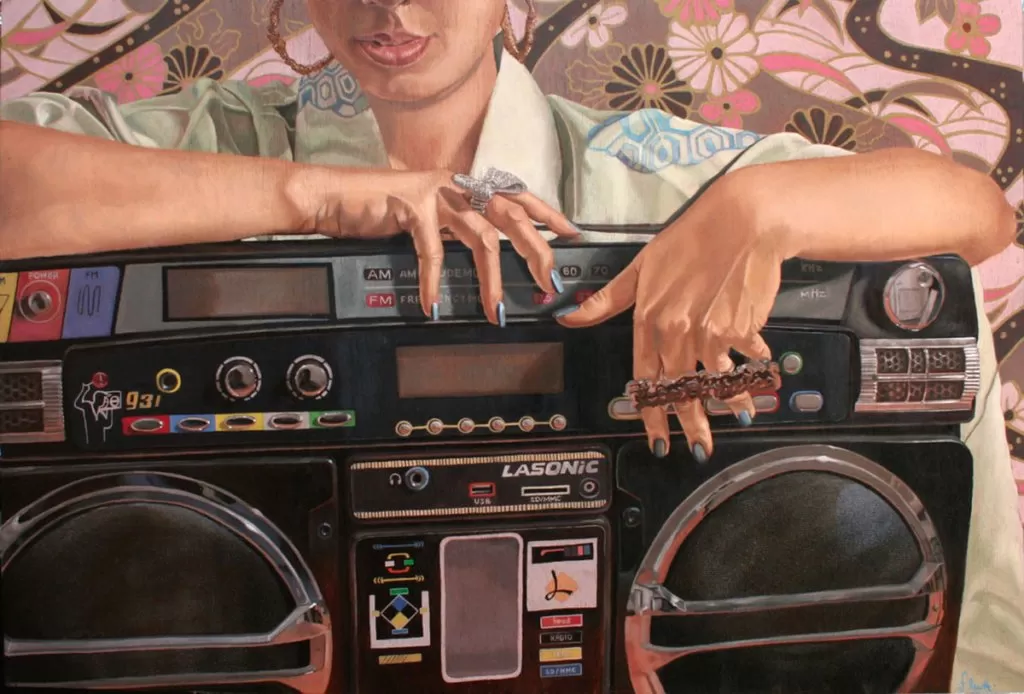
Q: What is your creative process when you’re creating?
Ken Flewellyn: I think of it like making beats. Like chopping up breaks, I find motifs I love and cut them into tiny pieces, mix and match then reassemble them into cohesive concepts. I’ll take those concepts and thumbnail as many compositions as I can and ultimately choose one. I’ll then get a model in for a photoshoot to get my reference shots and mash them up with the chopped motifs.
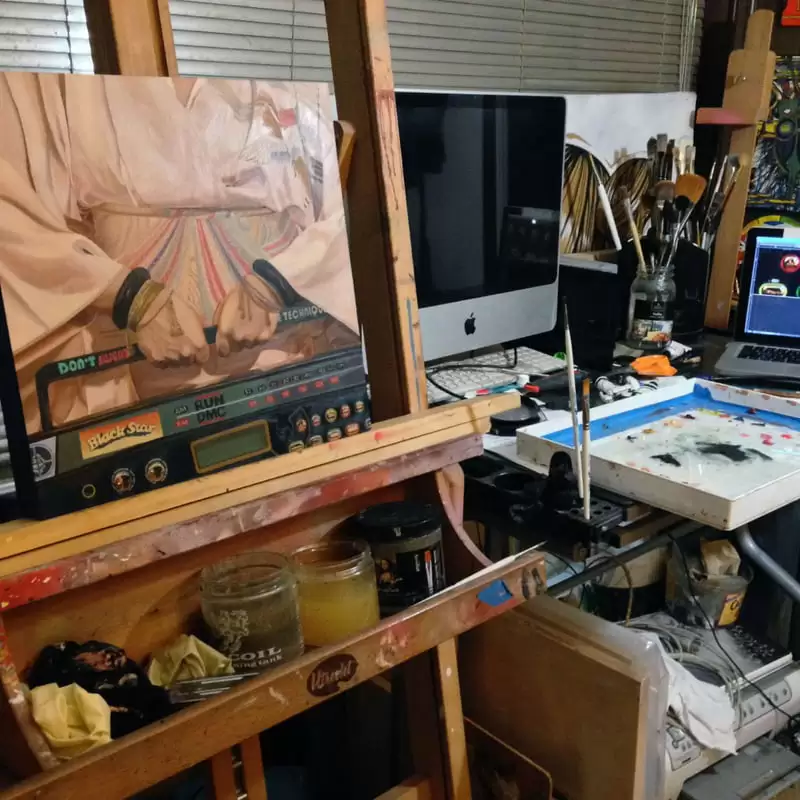
Q: Which is your preferred surface for working on?
Ken Flewellyn: Most of my work these days are painted on wood. Even my paper pieces I adhere them to wood in an effort to make them more archival. I love the tactile feel wood. It’s much more rigid than canvas and has no real bounce to it. Every brush stroke comes off smooth without getting stuck in texture or grain. Even sanding and preparing the wood to paint is meditative for me.
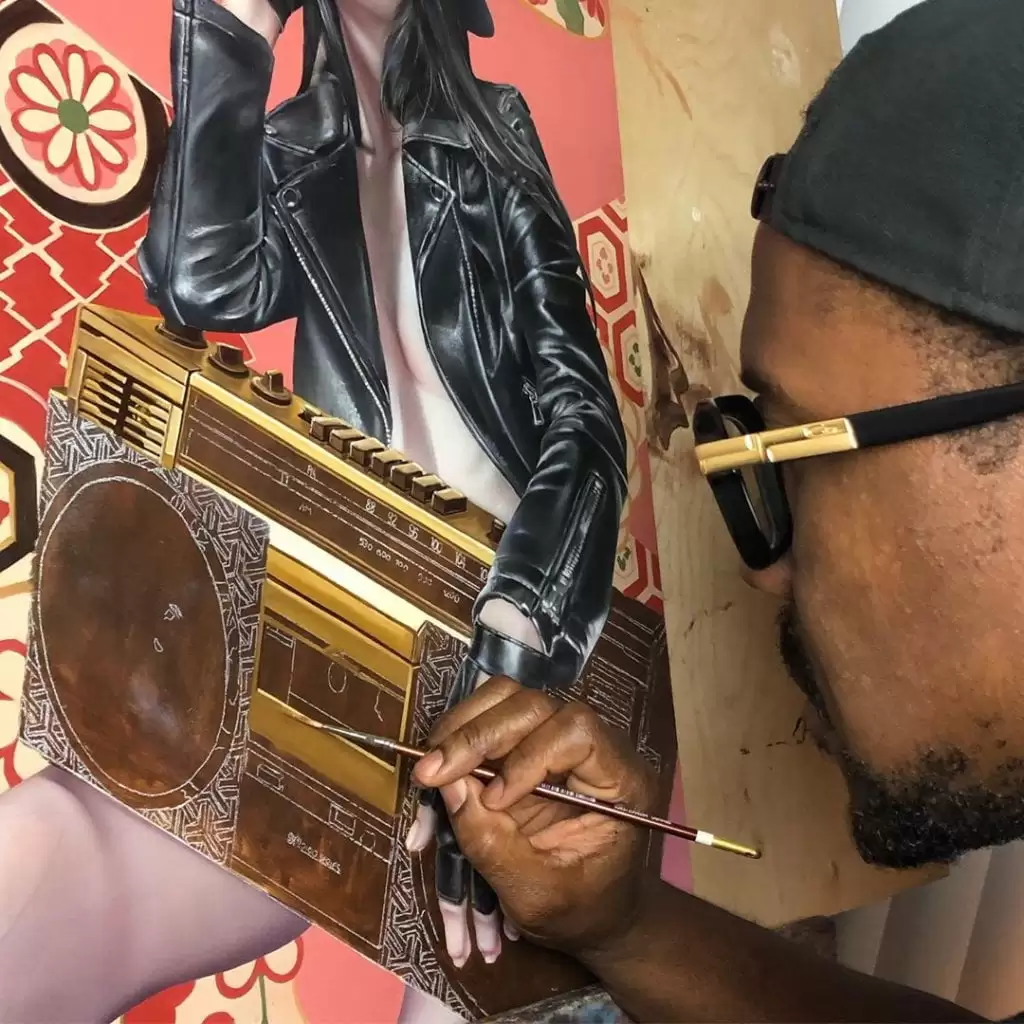
Q: What would you say is an integral part to the work of an Artist?
Ken Flewellyn: You have to really love the process of making art. Fame, pay, or even just a finished painting are irrelevant if you don’t put in the work. You’ll spend more time working on art than just about everything in life, so you have to love what you do. We all definitely know an artist that loves the life of an artist more than working as an artist.
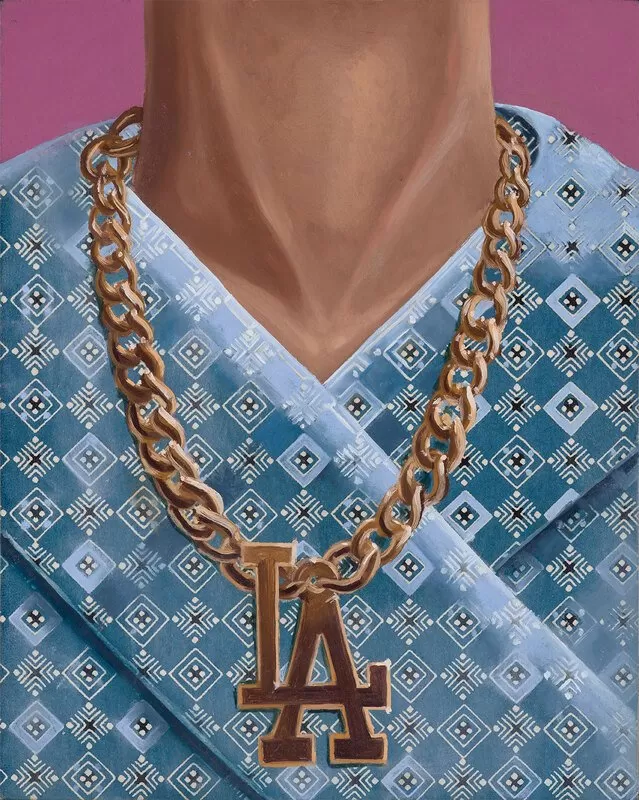
Q: What is the reason behind your use of Hip Hop and its culture in your works?
Ken Flewellyn: I think like most people my love of music really comes in many forms but hip hop has always stayed with me. I spent a good deal of my youth going to punk shows, or industrial clubs or ska bands at backyard parties. I went to jazz festivals and musky dancehall clubs, smoked cloves with goth kids and rode scooters with mods.
I’d dance at B-boy jams and or groove at Disco ping pong parlors. I was always fascinated with the subcultures, these tiny little microcosms surrounded around sound. No matter where I was or what new thing I discovered, I always came back to hip hop.
It was one of the first genres I knew. I remember being a kid and my dad taking me to cop cassettes of NWA, Tupac, Biggie, Snoop Dogg, Wu-Tang Clan, you name it. He and I still have inside jokes about Too Short or Mack10 to this day. Those were the good ole days.
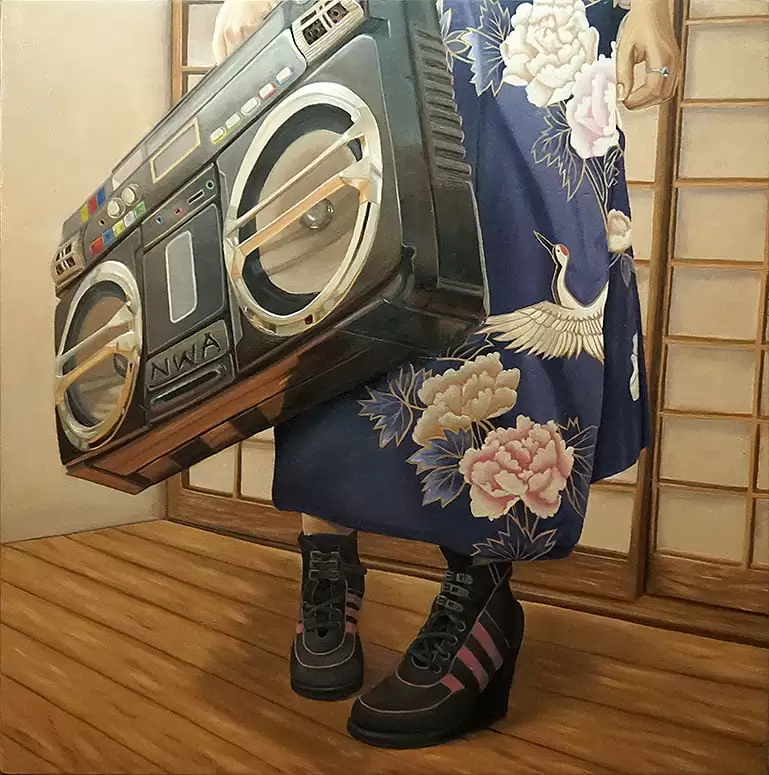
Q: How do you know when a piece is finished?
Ken Flewellyn: It really depends. Deadlines can be motivating. When you’re painting for a show, you may have numerous pieces going at once but ultimately that deadline decides when you’re done. I’m kind of a neurotic guy; my paintings are the world that I can control. In a perfect world, I’d have infinite time on all of my pieces to make them “perfect.” That’s not realistic, though.
After a certain point, that amount of control dwindles. It becomes less about making that exact idea and more about making a successful painting. With that in mind, I can run through my painting, making each section shine to the best of my ability. I can see things come into to focus one item at a time. Once it’s all pretty clear, I can run back over every element and unify them with tight detail.
Q: What is your favorite piece from your collection?
Ken Flewellyn: My favourite piece thus far is “All the Way Up,” a piece from my most recent solo “SHINE.” I really loved that composition and the challenges it set in front of me. The model for that one was an old friend of mine, who recently moved away, so that gave it a little extra sentimental value.
There was a good balance of things I KNEW I could paint well and uncharted territory. Up until that point, I had never painted cityscapes in 3-point perspective. All in all, I think the final product was successful as well as a learning experience.
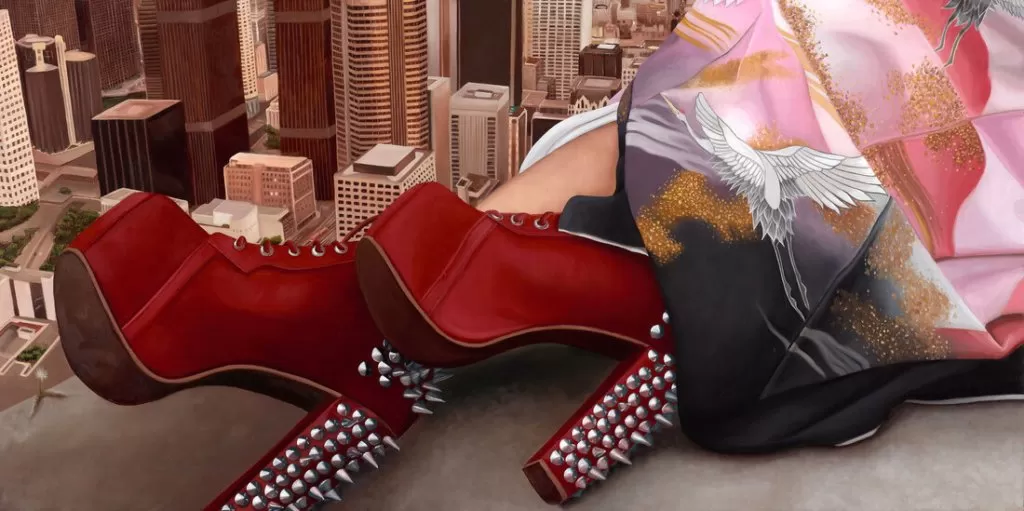
Q: How did you feel when you did your first solo exhibition?
Ken Flewellyn: The whole thing was surreal. It was the biggest body of work I’d released all at once so just finishing was a relief in itself. As the night approached, I was sleep deprived and nerve wracked. Would it sell well?
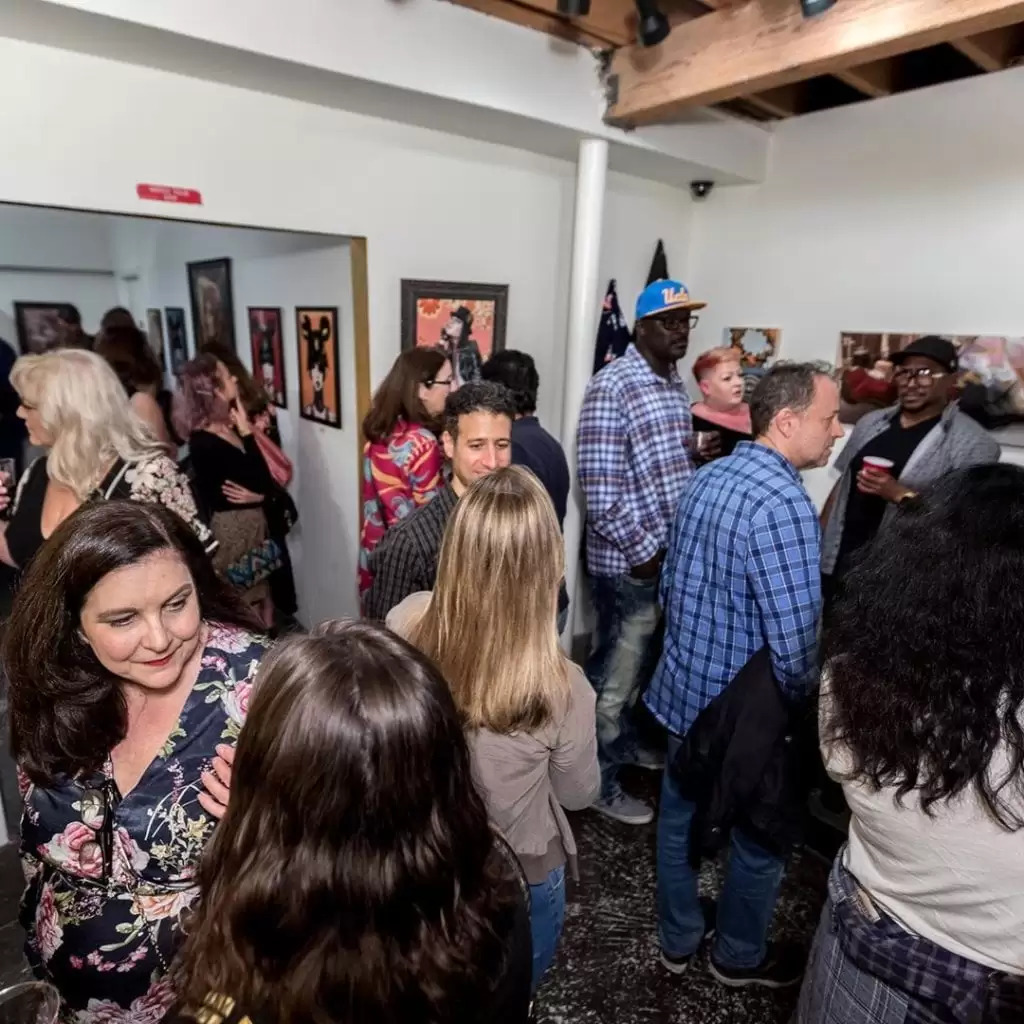
Once everything got started and I got to talk to people about my works, see old friends and family, meet boom box collectors, sneaker heads, crate diggers, music lovers in general it all felt worth it. “Stay Gold,” (named after the RTJ track) ended up selling out during opening night. Who could ask for more, right? It was just the icing on the cake after a night of making connections with so many amazing people.
Q: What is the most rewarding thing for you about being a part of the Art Industry?
Ken Flewellyn: I feel constantly intellectually and emotionally stimulated. I get a chance to continuously challenge myself and my peers. When I was in school, I was more interested in teaching art than anything else. Once I got out of school and into this gallery world, I realized how much of that teaching life was available to me as a working artist. I’ve mentored other artists and learned from a mentor myself. The internships and assistant gigs and studio visits have been invaluable.

Q: Is there anything that worries you about how social media is affecting the promotion of artists?
Ken Flewellyn: Social media is strange. It has so many benefits for an artist. There’s never been free advertising that’s been so effective. Unfortunately, like the rest of the internet, social media suggests that something’s worth is in its novelty and never in nuance. Moreover, it’s cultivated an audience of low attention spans searching for any reason to become viral. Everyone wants to be wowed by something they’ve never seen, and the second they’ve seen it, it’s passé. Artists then feel the need to keep up with the Jones’s. It makes for topical works that age poorly in the eye of history.
Q: In your opinion, do you have any advice for artists on how to manage their social media image? Or does it even need managing?
Ken Flewellyn: Manage it yourself and do you. Accounts with social media managers sound curated. They feel stilted and boring. People want to know about you and your life. They want to see your process. They want to see successes and setbacks as long as it’s genuine. My FAVORITE accounts are as fun witty and interesting as the actual people to run them. Social media’s a tool, but it’s kind of dorky fun too, treat it like that.
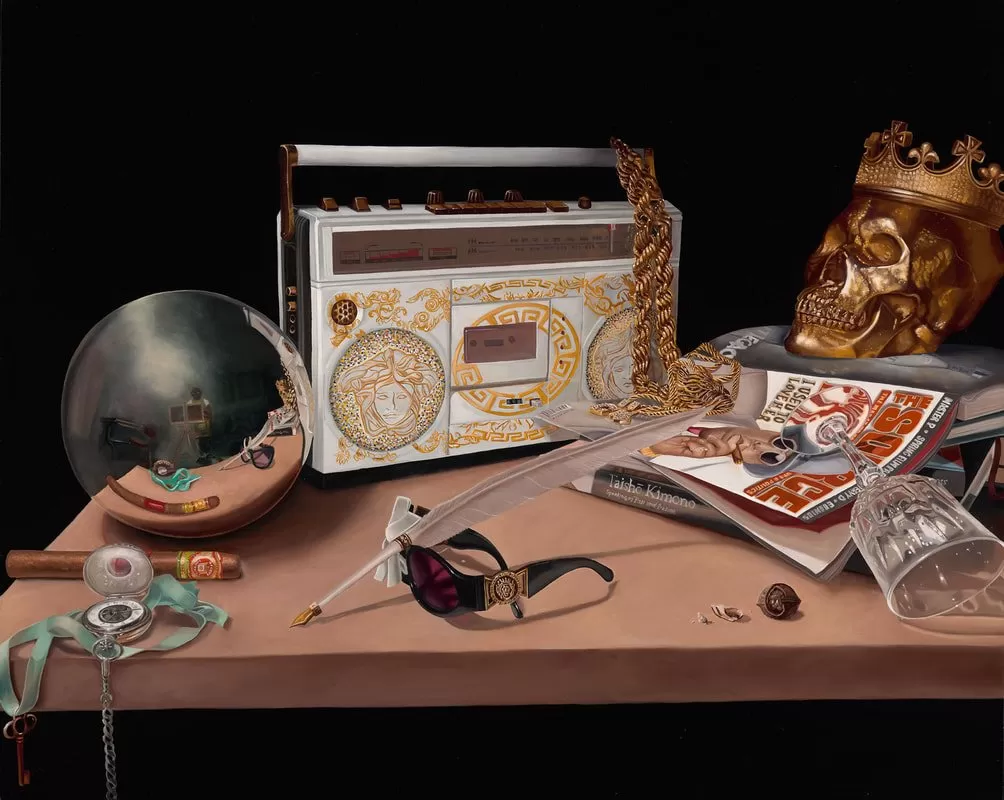
Q: Do you have any advice for artists starting and don’t know where to begin?
Ken Flewellyn: My pops always told me to figure out what you want and systematically remove the unknown steps to success. For me, I wanted into this industry but didn’t know why a gallery deserved 50% or how I get one to show my work or in the least, look at my portfolio. I took it upon myself to go to my favourite gallery and forge that relationship. I offered to work as an unpaid intern in exchange I’d learn all that I could about this industry. I followed that path to where I am now.
I worked on putting together pop-up shows and one-night warehouse events. I shipped artwork and prints. I ran point on sales and made strong connections with collectors. I basically did the damn thing until I felt like I could properly navigate this scene. I’m now director of Thinkspace Projects in Los Angeles and have been lucky enough to show my work around the world.
Want to get started in this industry?
Get yourself an art family. Your friends, colleagues, contemporaries; you all will move through this together. Together you can all lift each other up.
Find a gallery that suits your style. DON’T mass mail galleries. It shows your lack of knowledge and commitment to their vision. Artist on their roster are hand-picked. The least you could do is take the time to know if you’d fit their program. Make it a point to go to their shows. Get a vibe of what their tastes are.
DO NOT show them your portfolio while they’re working. Nothing’s worse than being cornered with a portfolio at an opening.
Be prepared for setbacks. Failure is an ongoing thing in this world. The good news? There’s no better teacher than a mistake.
Don’t be a Jag. Bad attitudes work you out of a gallery regardless of sales history or skill level.
Get a studio calendar and stay on top of deadlines.
Take advantage of the opportunity but remember it’s ok not to do EVERYTHING. I know a ton of artists with this problem. Do an appropriate amount of GREAT WORK, not an abundance of MEH.
Remember what galleries have done you right and which have done you wrong. If a gallery is taking advantage of artists be vocal about it. Chances are, if they’re not paying you, they’re not paying others.
Q: What would you say is the best way of getting your art noticed in the age of the internet?
Ken Flewellyn: Develop a clear vision for your work. You may love individual artists, and that’s ok. Certain artists may heavily influence you, and that’s ok. Careful though, the line between your voice and living in your hero’s shadow can be razor-thin. Do you and be loud about it.
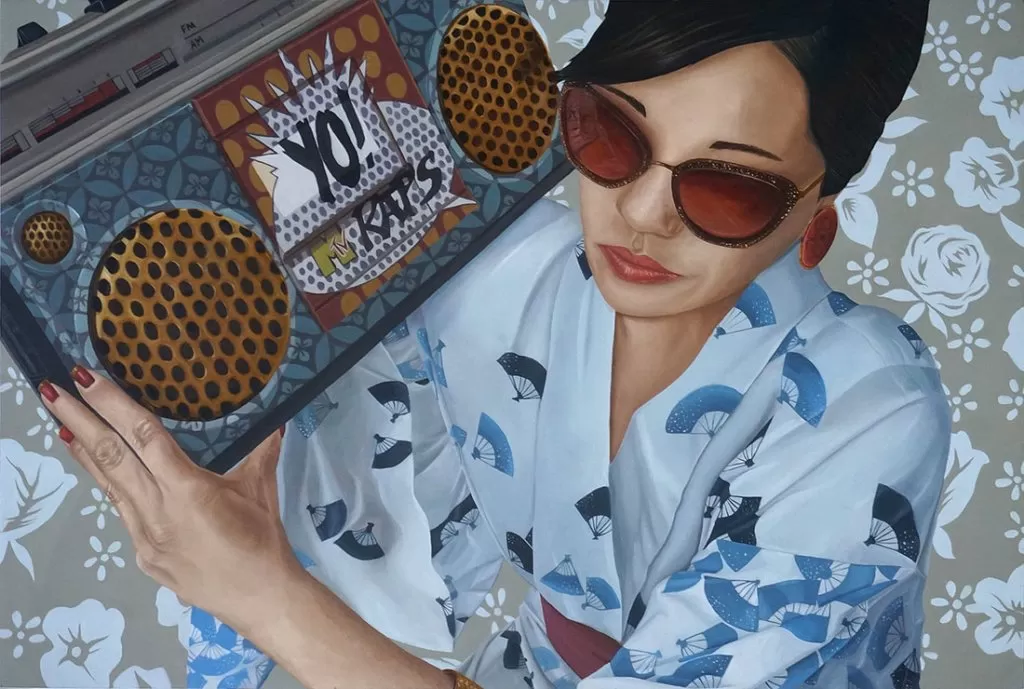
Q: Are there any places where you feel Art and Technology really shouldn’t overlap?
Ken Flewellyn: Not really. Tech is ever constantly blending with the world around us. There’s not much that can really be done about it. Individual preferences in art are so subjective; there will likely be room for analogue, digital, and all in between.
That was the exceptional Ken Flewellyn for Art Plugged’s artists inside the industry, and you can keep update with him by following him on Instagram by clicking the link below.
©2020 Ken Flewellyn


